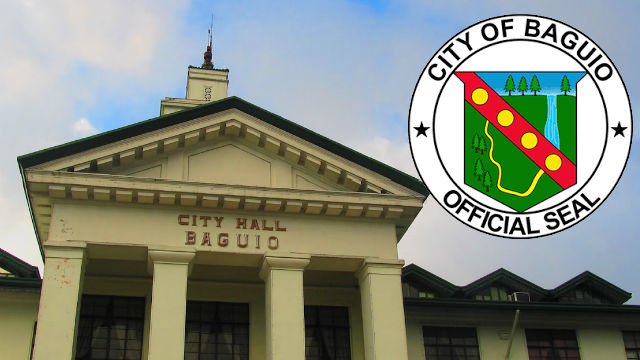The mission of Valentine’s is one of the very few old customs not on the wane as many people in Cordillera Administrative Region (CAR) have, for the last Valentine’s Day, been participants of this fact in distribution of love messages.
That love messages even cascades from the Baguio City Police Office (BCPO).
For on the streets that day, was seen BCPO personnel giving flowers and balloons to motorists.
But what gnaws deep in the bosom was, on said day, PCPT Julius B. Luis, acting station commander of BCPO’s Station 4, together with staff, instead chose to visit Ms. Nerissa C. Buclay, former kagawad of barangay Fort del Pilar, and presented her with flowers and goods.
Indeed, the stars diffuse happiness, as seen by the expression of Nerissa, through the thoughtful mind of Luis and staff, as revealing as a whole, a fire that we call love for your co-mortal strong for human minds and just right for human souls, for a fine lady like Nerissa who unfortunately is presently undergoing dialysis.
Readers, no doubt, will ask for Valentine’s origin, and here, Ah Kong is at fault for not knowing. But St. Valentines life as a man for his love and charity and the custom of choosing Valentines upon his festival, which is still practiced today, took its rise from thence.
No need therefore for explanation why Luis with his staff of BCPO Station 4 took it upon themselves to have former kagawad Nerissa as their Valentine with a profound and praying message for her that “even in the midst of adversity, hope lingers absolute. . .”
//////
There was one famous person who once said, “Old age has yet his honor and his toil.”
So it was last February 18, about 3:15 PM, PCPL Kenneth Mocnangan, assigned at BCPO Station 4, was seen as he assisted a senior citizen who apparently was not feeling well and rested himself along the road at Maxicar Village, Loakan Proper.
PCPL Macnongan who understands the toils of the elderly, gently led the elderly to a waiting BCPO patrol vehicle that eventually whisked the man to the Baguio General Hospital and Medical Center (BGHMC) for medical ministration.
//////
Guiding the young right.
February 20, at about 11:20 AM. BCPO Station 4 personnel gathered round a group of youngsters and sat down with them to enjoy a simple but hearty meal. During their mealtime, the police officers, acting the role as guardians or parents, timely reminded the kids never to wander anywhere without the presence of their own parents.
For the members of the police – just like our school teachers – can only reinforce what we, the parents, planted as seeds in the children.
//////
Knee injury doesn’t choose when it occurs, even when you are not exerting too much muscular movement. And it hits both the young and the elderly.
It occurs even during regular walks or pleasant stroll. You may have seen persons walking along the streets of Baguio when suddenly they stop, holding their knee while cringing in pain.
You may have witnessed walkers or joggers doing their exercises at Burnham Park and suddenly, they stop, hopping and favoring their leg while trying to massage it.
Tell-tale signs of knee injury are pain and swelling of the knee. Symptoms include tenderness along your joint line when you touch it and pain with walking. Knee injury can be mild to serious.
When someone walks with knee injury, there is a popping in the knee whenever the leg is in locomotion, accompanied by throbbing pain that slows down the walking movement of the person.
We sometimes refer it as “naligos,” or twisted which is correct. For it is definitely a strain or sprain.
Serious injury often occurs or is common when one is exerting physical effort.
When one starts to feel pain when walking, squatting or just sitting down, and can hardly climb stairs, chances are that person is suffering from knee injury.
Usual treatment for knee injury include massage, injections, physiotherapy as well as half or deep squatting to strengthen leg power.
But for many centuries, practitioners of martial arts have also long discovered that a form of standing exercise can help knee or kneecap injury and such fact was documented by physicians of the former Chinese National Institute of Physical Culture and now named China Institute of Sports Science.
The standing exercise was documented way back in 1972.
This form of standing exercise is also known by martial arts practitioners in the Cordillera Administrative Region (CAR).
Doctors of the institute explained that the standing exercise developed by exponents of martial arts plays a dual role of “treatment and fitness exercise,” for anybody who sustained knee or kneecap injury which does not need operation.
It can be done anywhere, anytime, needs no equipment and very easy to learn.
First, you stand with feet apart at shoulder-width, toes pointing forward, trunk or chest held upright and knees bent at an angle about 130 degrees or half of a half-squat.
“This is the key point, “the institute document explained, “making it different from the 100 or 110-degree half squat.”
Holding that half of a half-squat steady, raised your arms to shoulder level with the fingers spread and slight bent. You will feel soreness in your shoulders but it is alright. Hold on to the posture as long as you can.
Then slowly slowly put down your arms and straighten up. Repeat the posture as many times as you can in one session exercise, without straitening up.
At the end of one session, straighten up slowly and stand at ease for two, three or four minutes, then limber up you knee joints by doing some relaxing exercise.
Practice the exercise once in the morning and once in the afternoon, for about five minutes each session, gradually increasing the time as the days go by.
In the first few minutes of the first day, your leg muscles may feel sore. Then the ache moves to parts around the knee. “This shows that the vulnerable tissue in the knee joints is being strengthened,” the institute document said, “since the load placed on both legs is not as heavy as that in the half or deep squatting position. One should have no difficulty in keeping this session posture.”
In comparison of the standing exercise to deep squatting exercise, those with knee injury tend to favor their good leg because the other one hurts, one reason why the deep squat exercise often fail to produce expected result.
When knee joints become sore, there is slight trembling in the leg muscles, growing in intensity, including squeaks in knee joints.
As one keeps up with the standing exercise, muscle tremors will be followed by rhythmical upward and downward jumping movements of the whole body. As muscle endurance increases, these movements will slow down and replaced by local muscle trembling. For a while, the whole body may again be jumpy.
As the muscles are in a state of continuous compression and relaxation, they will not become stiff as a result of the exercise, the institute explained.
“All these happens quite naturally and no need to exert yourself at all,” the institute said.
After a 20 minutes standing exercise session, skin temperature around the knee joints increases by four to five degrees, the upper part of the leg by one degree, as a result of blood circulating around the knee joint.
A very interesting point: when one straitens up after the exercise, there is a sudden downward rush of blood, forcing entry into the previously clogged blood vessels, thereby improving local nourishment to the affected parts of the knee.
The institute says to many, it would be a bit tedious for the young and some old standing still for 20 minutes in 130 degrees’ stance. But if you want your hurt knee to be well, it must be done studiously. –Bony A. Bengwayan













